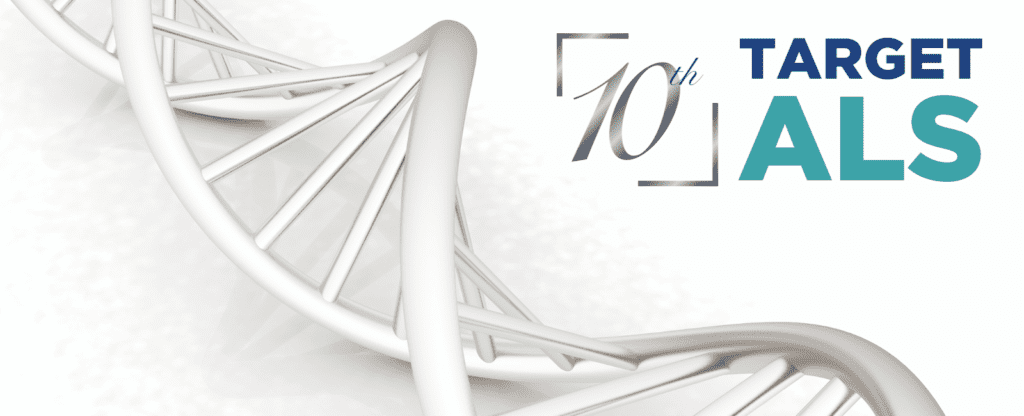
In 2013, Target ALS was founded by Dan Doctoroff in response to his personal experience with ALS; both his father and uncle passed away from the disease. Now, ten years later, he is battling his own ALS diagnosis. Target ALS’ mission at its founding was to remove the barriers that were limiting progress toward the development of ALS treatments. At the time, ALS researchers worked in silos, and access to critical research tools was limited.
Target ALS transformed the way ALS research is approached with our landmark “Innovation Ecosystem” model that empowers researchers through collaboration, funding, and cutting-edge resources to facilitate their work.
The Target ALS Innovation Ecosystem was created to eradicate the following barriers to progress in ALS research:
- Gaps in funding
- Siloed research
- Lack of scientific resources
- Limited industry investment
- Bias in funding decisions
- Intellectual property restrictions
Unmatched in the field, the Innovation Ecosystem is a radically different approach to accelerating breakthroughs in drug discovery and improving what scientists understand about ALS.
What We’ve Accomplished
Our mission has fostered unprecedented collaborations between academia and the pharma and biotech industry, lowered barriers to access to critical research tools, and become a hub of communication and networking for the worldwide research community.
In the last decade, Target ALS has made a significant impact:
- Funded 600+ research grants
- Granted $64.5 million to ALS research
- Supported work that led to the launch of 7 clinical trials
Additionally, 60% of Target ALS-funded consortia have led to drug discovery programs, and 5 biotech companies have spun out from this work. All of our efforts tie back to our fundamental mission to accelerate research and develop effective treatments for ALS.
Looking Back at the Last Decade

2013
- Target ALS is founded.
- 45 grants issued for 10 research projects to 36 scientists at 20 institutions totaling $4.43 million.
2014
- The first clinical trial launched from funded research.
- The first Springboard Fellowship funding call.
- Postmortem Tissue Core is launched.
2015
- Target ALS becomes an independent private nonprofit organization.
- Antibody Core, Viral Vector Core, and Stem Cell Core are launched.
- The first Target Validation funding call.
2016
- The first ever industry-led consortia is funded.
- Genomic Datasets Core is launched.
2017
- The second Springboard Fellowship funding call.
- The second Target Validation funding call.
2018
- The second clinical trial launched from Target ALS-funded work: C9orf72 ASO from Biogen.
2019
- The first Biomarker Funding call.
- The precompetitive biomarker initiative is launched.
- Target ALS is recognized as a public non-profit organization.
2020
- The third clinical trial launched based on Target ALS-funded work: BIIB-100 from Biogen.
- Natural History Study is launched.
- The fourth clinical trial launched based on Target-ALS funded work: BIIB-105 from Biogen.
2021
- The fifth clinical trial launched based on Target ALS-funded work: EIF2b from Denali Therapeutics.
2022
- The Capital Campaign is launched.
- The sixth clinical trial launched based on Target ALS-funded work: RIPk1 from Denali Therapeutics.
- The Seven Pillar Strategy is implemented.
2023
- The Natural History Study’s diversity initiative is launched.
- 109 grants issued for 63 research projects to 75 scientists at 39 institutions in 11 countries totaling $13.05 million.
- The seventh clinical trial is launched based on Target ALS-funded work: Stathmin2 from QurAlis.
Looking Ahead to the Future
Over the last ten years, Target ALS has laid the foundation for future breakthroughs in ALS research. Since Dan’s diagnosis in 2022, he has focused his efforts on scaling up the organization, embarking on a bold campaign to raise $250 million.
As we enter the next decade of Target ALS, we have enacted an ambitious Seven-Pillar Strategy to expand our collaborative research model and drive the discovery of biomarkers and the development of treatments for ALS.
7 Pillar Goals for the Next 10 Years:
- Pillar 1: Diversification and Expansion of Talent
- Pillar 2: Maintenance and Expansion of Scientific Core Facilities
- Pillar 3: Applying the Target ALS Model to Related Diseases
- Pillar 4: Discovery and Development of New Therapeutic Targets
- Pillar 5: Discovery and Development of Toolkit of Biomarkers
- Pillar 6: Treatment of Ultra-Rare Forms of ALS
- Pillar 7: Prudent Growth of Target ALS’ Capacity
This is a pivotal moment in Target ALS’ history, where we are not only supporting innovative research, but are driving the strategy to achieve our ultimate goal: realizing a world where Everyone Lives.



